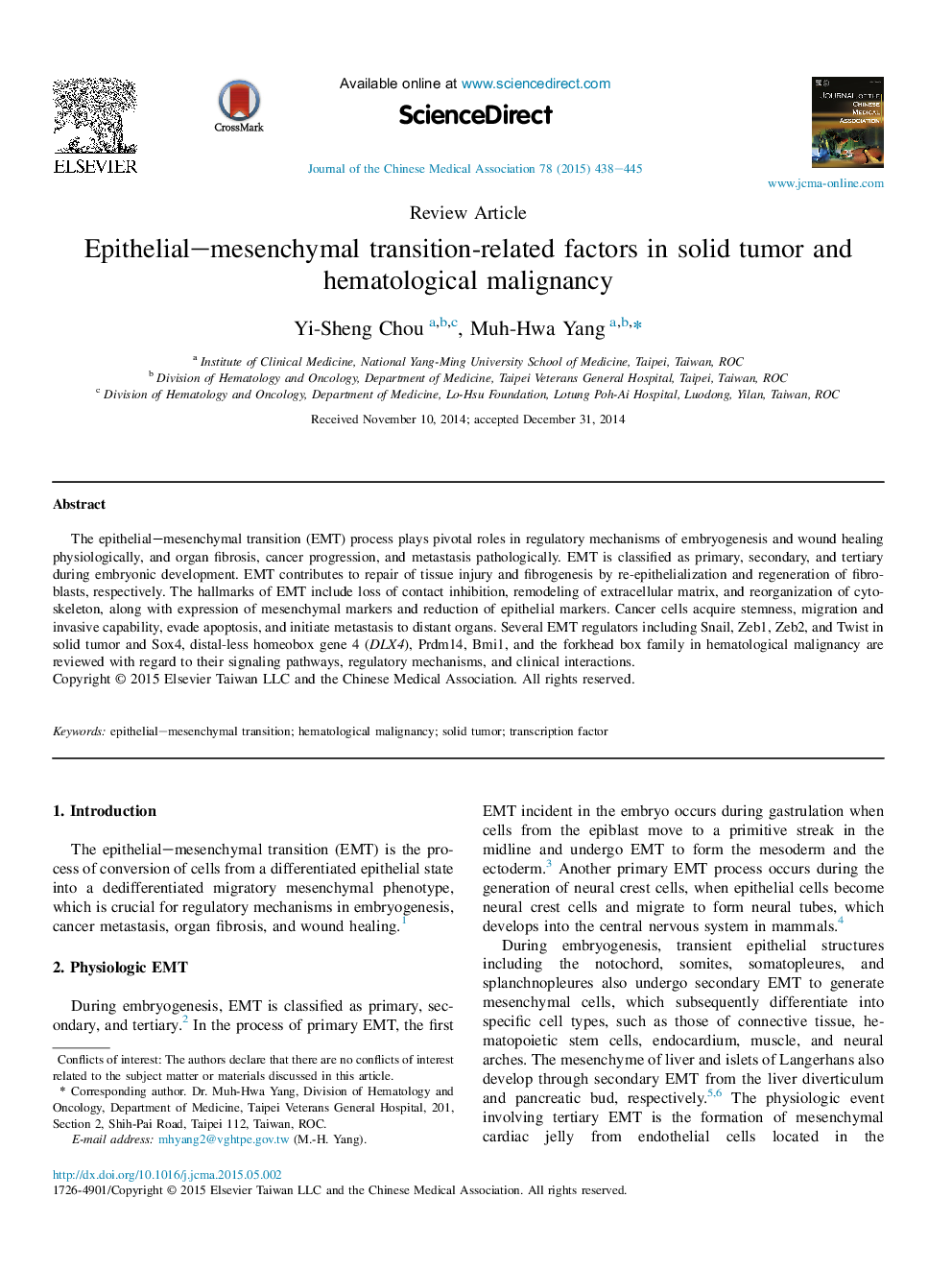| Article ID | Journal | Published Year | Pages | File Type |
|---|---|---|---|---|
| 3475837 | Journal of the Chinese Medical Association | 2015 | 8 Pages |
The epithelial–mesenchymal transition (EMT) process plays pivotal roles in regulatory mechanisms of embryogenesis and wound healing physiologically, and organ fibrosis, cancer progression, and metastasis pathologically. EMT is classified as primary, secondary, and tertiary during embryonic development. EMT contributes to repair of tissue injury and fibrogenesis by re-epithelialization and regeneration of fibroblasts, respectively. The hallmarks of EMT include loss of contact inhibition, remodeling of extracellular matrix, and reorganization of cytoskeleton, along with expression of mesenchymal markers and reduction of epithelial markers. Cancer cells acquire stemness, migration and invasive capability, evade apoptosis, and initiate metastasis to distant organs. Several EMT regulators including Snail, Zeb1, Zeb2, and Twist in solid tumor and Sox4, distal-less homeobox gene 4 (DLX4), Prdm14, Bmi1, and the forkhead box family in hematological malignancy are reviewed with regard to their signaling pathways, regulatory mechanisms, and clinical interactions.
